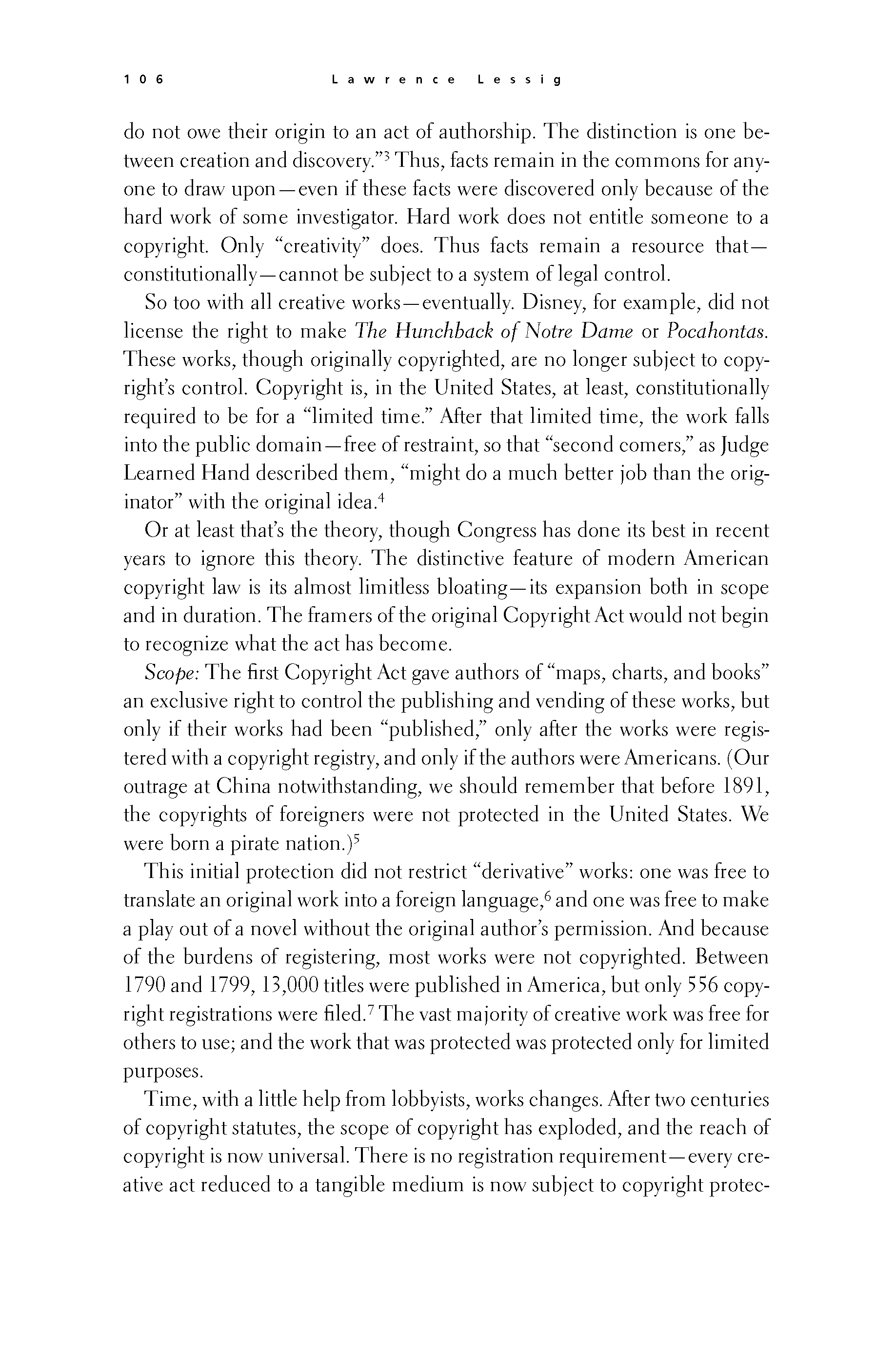 p105 _
-chap- _
toc-1 _
p106w _
toc-2 _
+chap+ _
p107
p105 _
-chap- _
toc-1 _
p106w _
toc-2 _
+chap+ _
p107
do not owe their origin to an act of authorship. The distinction is one be-
tween creation and discovery."[7-3] Thus, facts remain in the commons for any-
one to draw upon -- even if these facts were discovered only because of the
hard work of some investigator. Hard work does not entitle someone to a
copyright. Only "creativity" does. Thus facts remain a resource that --
constitutionally -- cannot be subject to a system of legal control.
So too with all creative works -- eventually. Disney, for example, did not
license the right to make _The_Hunchback_of_Notre_Dame_ or _Pocahontas._
These works, though originally copyrighted, are no longer subject to copy-
right's control. Copyright is, in the United States, at least, constitutionally
required to be for a "limited time." After that limited time, the work falls
into the public domain -- free of restraint, so that "second comers," as Judge
Learned Hand described them, "might do a much better job than the orig-
inator" with the original idea.[7-4]
Or at least that's the theory, though Congress has done its best in recent
years to ignore this theory. The distinctive feature of modern American
copyright law is its almost limitless bloating -- its expansion both in scope
and in duration. The framers of the original Copyright Act would not begin
to recognize what the act has become.
_Scope:_ The first Copyright Act gave authors of "maps, charts, and books"
an exclusive right to control the publishing and vending of these works, but
only if their works had been "published," only after the works were regis-
tered with a copyright registry, and only if the authors were Americans. (Our
outrage at China notwithstanding, we should remember that before 1891,
the copyrights of foreigners were not protected in the United States. We
were born a pirate nation.)[7-5]
This initial protection did not restrict "derivative" works: one was free to
translate an original work into a foreign language,[7-6] and one was free to make
a play out of a novel without the original author's permission. And because
of the burdens of registering, most works were not copyrighted. Between
1790 and 1799, 13,000 titles were published in America, but only 556 copy-
right registrations were filed.[7-7] The vast majority of creative work was free for
others to use; and the work that was protected was protected only for limited
purposes.
Time, with a little help from lobbyists, works changes. After two centuries
of copyright statutes, the scope of copyright has exploded, and the reach of
copyright is now universal. There is no registration requirement -- every cre-
ative act reduced to a tangible medium is now subject to copyright protec-
[[106]]
p105 _
-chap- _
toc-1 _
p106w _
toc-2 _
+chap+ _
p107